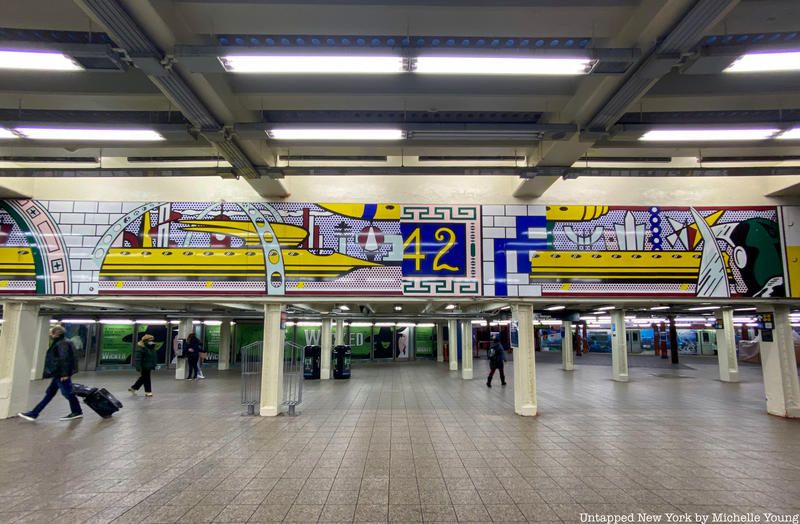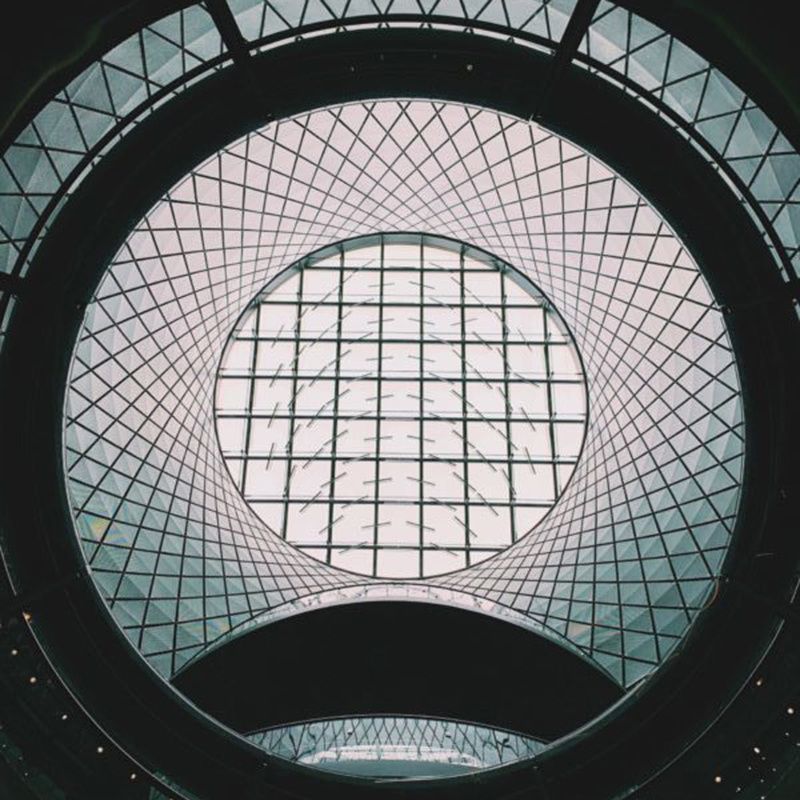How to Make a Subway Map with John Tauranac
Hear from an author and map designer who has been creating maps of the NYC subway, officially and unofficially, for over forty years!


Believe it or not, the New York City subway system houses one of the world’s largest collections of public art. According to MTA Arts & Design, there are more than 370 different art installations spread throughout the subterranean transit system. Among the artists with works on display underground are household names that have been exhibited in the most illustrious museums across the globe. Here, we highlight 5 famous artists and architects you might be surprised to learn have art on display along the tracks beneath your feet!
See some of these works in person on our upcoming Underground Subway Art Tour led by Untapped New York’s Chief Experience Officer Justin Rivers and Artist-in-residence Aaron Asis!

For her subway mosaic at the 72 St. (B/C) station, Yoko Ono brought a bit of the sky underground. Aptly titled, “SKY,” this 2018 artwork depicts bright white clouds set against a vibrant blue background. Scattered throughout the serene scene are messages of hope. Words like “dream,” “remember,” “imagine,” and “peace,” float among the clouds. The location of this installation is nearby by Ono’s home at The Dakota, a place she shared with the late John Lennon. She created this installation in his memory.

Roy Lichenstein’s Pop Art style is instantly recognizable in the brightly colored piece, “Times Square Mural,” at the Times Sq-42 St. (1/2/3/N/Q/R/W/S) station. Lichtenstein, a native New Yorker who studied at the Arts Students League, incorporated both historic and futuristic imagery in this massive piece. The main focus of the 53-foot-long scene is a bright yellow bullet train that is traveling past skinny skyscrapers and through arched subway tunnels.
Lichtenstein pays homage to the station’s history by incorporating the original “42” title design, and includes a nod to the 1964 World’s Fair, as you can see what looks like the Unisphere and one of the New York State Pavilion Observation Towers in the background. Made of porcelain enamel on steel, the mural was designed and fabricated by Lichtenstein in 1997. It was installed posthumously in 2002. You can see more of Lichenstein’s work at The Guggenheim, MoMA, and The Whitney.

Yayoi Kusama, another alum of the Art Students League, began exhibiting her work in New York way back in the 1950s. She debuted one of her most popular pieces, Infinity Mirror Room, in 1965. She would reiterate this installation in New York City multiple times with great success, most recently in 2013, 2017, and 2023. Renowned for her polka-dot-covered sculptures and paintings, Kusama’s first permanent underground work can be found at Grand Central Madison, on the Madison Concourse between 46th and 47th streets.
Titled, A Message of Love, Directly from My Heart unto the Universe, this frenetic mosaic stretches 120 feet wide and 7 feet tall. As you walk along the length of the installation, you’ll notice abstract and figurative images that look like faces, the sun, or even microscopic cells. They are meant to evoke themes of Love, universe, and peace. In a poem that accompanies the mural, Kusama writes, “May you all experience the true beauty of loving humanity./Human life is beautiful./My wish is to deliver this vision, with all that is in my life, to the people of New York.”

Milton Glaser is most famous for creating the iconic “I ♥ NY” logo. The design was made for a tourism campaign in 1977. Beyond the wild success of this logo, Glaser was a prolific graphic designer who was the first to be awarded the National Medal of the Arts. He’s also no stranger to creating art in the subway. In 2017 he designed a series of posters for the School of Visual Art’s (SVA) “Underground Images” ad campaign. A permanent work by Glaser can be found at the Astor Place (6) station.
Untitled, is a series of geometric patterns in colors and shapes that reinterpret the original decorative elements of the station. The puzzle-like patterns pay homage to the station’s historic terra cotta tiles featuring a symbol of the Astor family, the beaver on which their wealth was founded.

The designs of architect Philip Johnson can be seen in many places throughout New York City above ground, but below the streets, there is one example of his work. A figure of the Modern and Post-Modern architect, Johnson is famous for designing Manhattan’s 550 Madison, the Seagram Building with Mies Van Der Rohe, additions to the Museum of Modern Art, and the David A. Koch Theater at Lincoln Center. He also designed the New York State Pavilion for the 1964 World’s Fair in Queens.
His permanent subway fixture is an orange-clad, mid-century platform at 49th Street ( N/Q/R/W) station. In the 1970s, Johnson was hired by the Transit Authority to make this station more hospitable and visually appealing for riders. Johnson chose to cover the walls in orange glazed brick instead of white subway tiles, install a terrazzo floor, remove columns for a more open feel, and add floating benches. Other stations that were improved at this time were 42nd Street, 47th-50th Street, 57th Street, 60th Street and Bowling Green.

The MTA Arts & Design program officially began in 1985, but that doesn’t mean artists weren’t already leaving their mark on the subway in an unofficial capacity. In the early 1980s as graffiti artists tagged subway cars, burgeoning artist Keith Haring found a unique canvas for his own drawings – the blank advertising panels covered with black paper. In 1980, Haring began using these empty spaces as a “laboratory” where he experimented with what would become his iconic line drawings. He carried on with this work for five years.
Underground Art in the Subway Tour

Haring said of his subway drawings, “…although my career aboveground has skyrocketed, the subway is still my favorite place to draw. There is something very “real” about the subway system and the people who travel in it; perhaps there is not another place in the world where people of such diverse appearance, background, and lifestyle have intermingled for a common purpose.” Though there is none of Haring’s work on permanent view in the subway station today, you can see his art in many above-ground locations across New York City.
Next, check out 5 Interactive Subway Art Pieces and 10 Hidden Subway Art Pieces
Subscribe to our newsletter